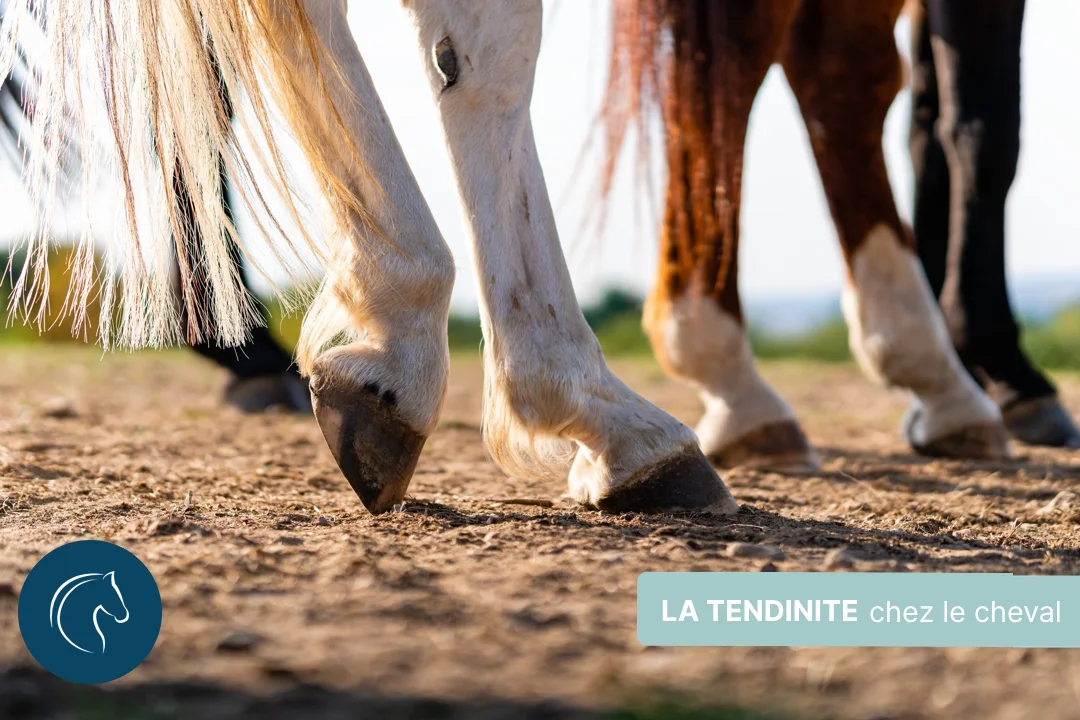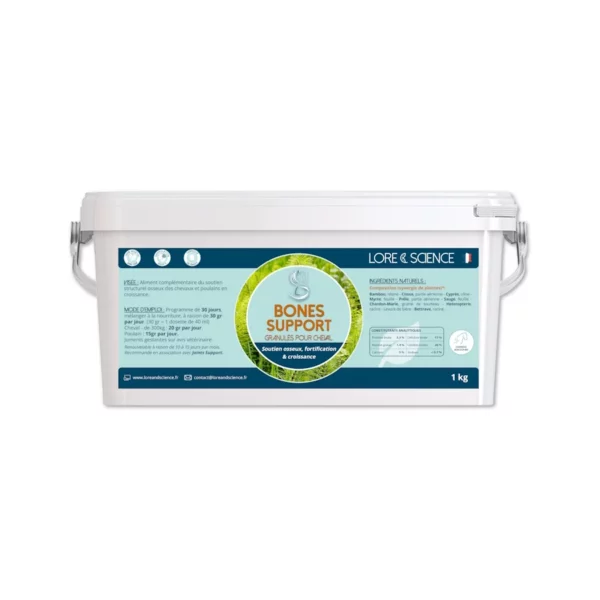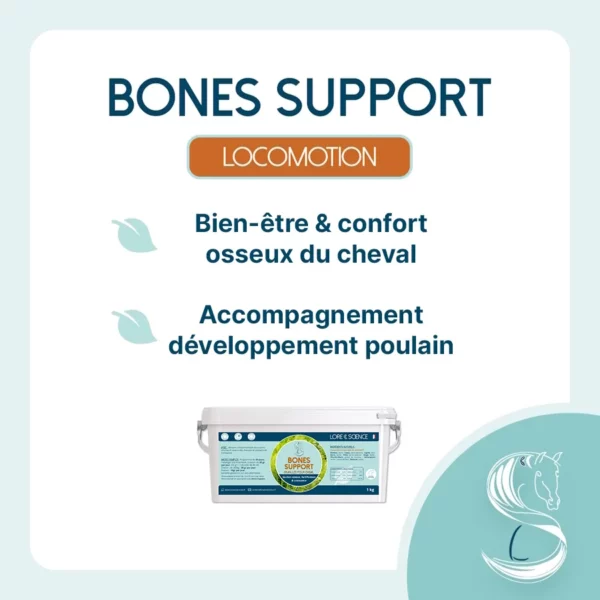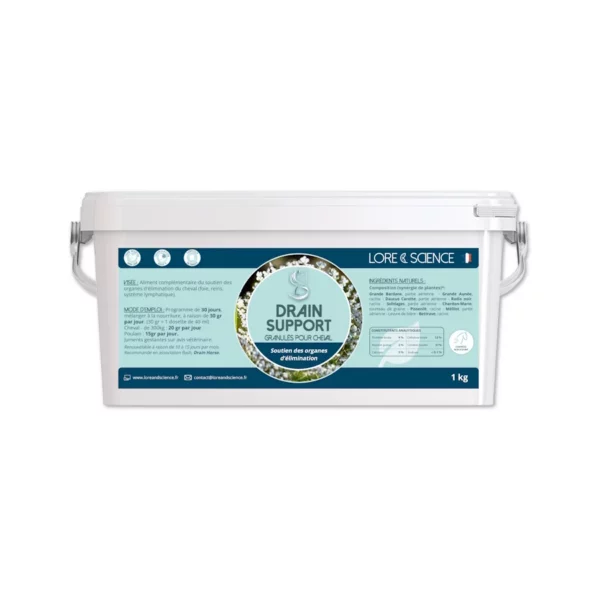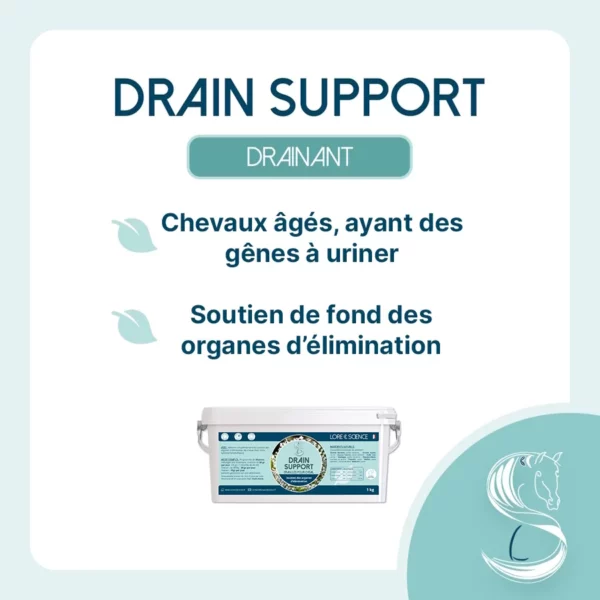Tendon disorders are common in horses. Tendonitis is one of them, it occurs when the collagen fibers that make up the tendon undergo a partial or complete rupture. Common in particular in sport horses, they can nevertheless affect all equids. Painful and long to heal, they require special care and attention. Causes, symptoms, treatments: Lore & Science tells you everything about tendonitis in horses.
Causes of tendonitis in horses
Tendonitis occurs most of the time during exercise. Often, tendonitis is caused by excessive fatigue due to excessive, repeated or unusual work. They can also occur due to genetic predisposition, old age, overweight or hormonal imbalances.
Thus, tendonitis is difficult to anticipate. However, here are some tips to limit the risks:
- Avoid having your horse work on soft or slippery ground to limit tendon hyperextension.
- Take the time towarm up your horse before the work sessions.
- Do not overwork your horse's limbs by training too intensively or repeatedly.
- Change your horse's shoes regularly to balance its support.
Tendonitis can occur in any tendon, but it is most common in the tendons of the limbs, such as the deep digital flexor tendon (DDFT) and the superficial digital flexor tendon (SDFT).
To limit the risk of tendonitis, you can take care of your horse's tendons after intense efforts with a natural balm made of plants and essential oils whose clinical effectiveness has been proven. Apply Tendinis Bal m after strenuous exercise, a long ride or a competition to bring immediate relief to the tendons. Its cooling effect and its synergy of plants and essential oils tones and tightens tissues upon application. It can also be used as a treatment for already diagnosed tendonitis.
How is tendonitis diagnosed?
Often, the first signs of tendonitis in horses are quite subtle. Symptoms can vary depending on the severity of the condition and the location of the affected tendon, but the most common ones are
- Pain and swelling in the affected area
- Stiffness and difficulty moving the affected limb
- Lameness
- Sensitivity to touch
- Thickening or nodules in the affected tendon
If you notice these signs in your horse or mare, rest for a few days immediately. After this time, if the symptoms persist, call your veterinarian to make a diagnosis.
The examination begins with an observation of the animal's legs on the flat, at rest and in motion. The veterinarian also examines the affected area for swelling, pain or tenderness, as well as to check the mobility and range of motion of the affected limb. Finally, an ultrasound may be ordered to visualize the internal tissues and check the extent of inflammation and swelling.
How to treat tendonitis in horses?
Of course, the first reflex in case of tendonitis will be to put the animal at rest. This rest can last from 3 to 15 weeks depending on the recommendations of your veterinarian. Most of the time, a daily walk on hard ground is indicated to continue to physically solicit the horse. The resumption of work must be done gradually and according to an established program. Thus, the return to normal work can take from 6 months to 1 year depending on the severity of the injury.
On the feeding side, you can help your horse to heal by using herbal supplements with clinically proven effectiveness. Joint Support, for example, helps strengthen and maintain the health of cartilage and tendons. A 20-day course of this synergy of 5 medicinal plants (Blackcurrant, Ulmaire, Heteropteris, Peony and Buplèvre) helps tohydrate cartilage and regulate joint genes.
-
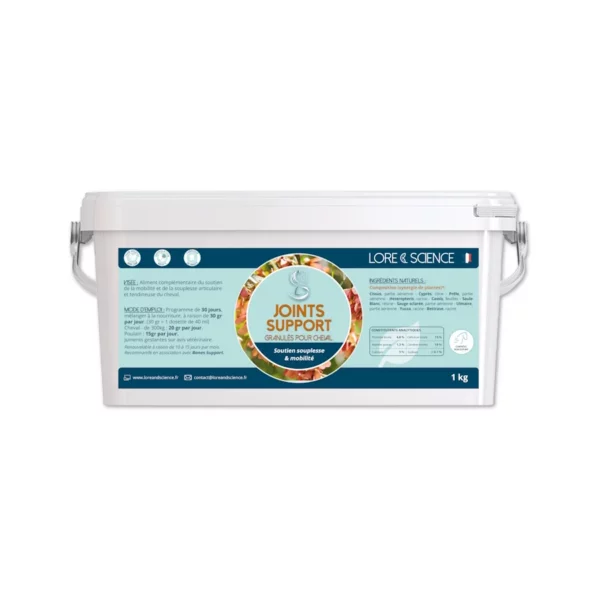
 Joints Support - Supporting the horse's cartilage49,90 € - 99,90 €
Joints Support - Supporting the horse's cartilage49,90 € - 99,90 €
Depending on your veterinarian's recommendations, you can apply bandages, ice packs or clay to relieve and help regenerate the tissue. Our Tendinis Balm is also an effective and natural treatment to unclog tendons, while acting as a natural anti-inflammatory. The relief of the pain is then almost immediate.
Finally, some tendonitises require the prescription of an orthopedic shoe by a veterinarian.
Only the most severe tendonitis will result in surgery. This remains very rare. Indeed, surgery is generally considered a last resort option, as it involves risks and a longer recovery period.
The risk of recurrence
Unfortunately, even after healing, the affected tendon remains fragile. Therefore, it is essential to take care of possible recurrences. For sport horses, this can mean the end of their sporting career.
When the deep flexors are affected, it is possible that chronic tendonitis may result. This is most often the case when tendonitis is caused by the horse working too hard.
Thus, to limit recurrences, it is important to set up a very gradual resumption of work, followed by training sessions that are always adapted. Rest remains the best ally for a good recovery and a good regeneration of tissues between two sessions. Therefore, make sure that your horse follows a progressive exercise regime appropriate to its level of fitness and capacity throughout its life.
Questions about tendonitis or tendon care for your horse? Leave us a comment ↓

